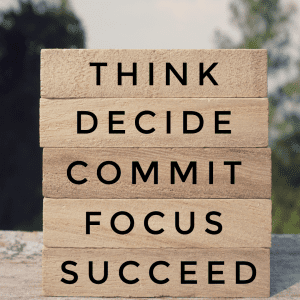Making Lasting Changes: A Doctor’s Guide to Realistic New Year’s Resolutions by Dr. Sarah Crawford
As a Doctor of Physical Therapy committed to holistic, whole human well-being, I’ve observed the yearly rush of New Year’s resolutions often leading to unsustainable commitments for just about thirteen years now. This cycle of setting ambitious goals and subsequent abandonment is a familiar pattern. However, I firmly believe in a more sustainable approach to resolutions—one that prioritizes long-term health and wellness. Hopefully my consistent messaging will rub off on more of my clients (and myself if I am being honest). I understand first hand how hard it is to maintain the change you want to see.
Understanding the Cycle: Binge-Purge Resolutions: The allure of a fresh start on January 1st often leads to setting grand resolutions like drastic weight loss, intense exercise routines, or strict diet changes.
 However, the excitement fades, motivation dwindles, and the cycle of overcommitment and abandonment sets in. Luckily we have science to back up that these things don’t work.
However, the excitement fades, motivation dwindles, and the cycle of overcommitment and abandonment sets in. Luckily we have science to back up that these things don’t work.
The psychology behind this phenomenon is multifaceted, often influenced by factors like goal specificity, social support, and the formation of sustainable habits. Setting clear, achievable goals coupled with consistent efforts significantly increases the likelihood of adherence. Moreover, those who incorporate gradual changes and focus on intrinsic motivation, rather than quick fixes, tend to experience more sustained success in their resolution journeys.”
Doctor’s Recommendation: A Shift in Perspective:
Let’s recalibrate our approach to resolutions. Here are actionable recommendations grounded in my experience:
Habit Stacking:
Incorporate new habits into your routine by pairing them with existing behaviors. For instance, if you aim to improve posture, stack it with your morning routine—practice mindful posture while brushing your teeth.
James Clear, a renowned author and expert in habit formation, popularized the concept of habit stacking as a strategy for building new habits. The philosophy behind habit stacking revolves around the idea of piggybacking new behaviors onto existing routines, leveraging the momentum of established actions to facilitate the adoption of new ones. By linking a desired habit with a consistent, established behavior, habit stacking taps into the brain’s inclination towards familiarity and routine.
This approach works due to a psychological principle known as “chunking” or “chaining.” The brain is wired to create associations between actions, making it easier to recall a series of behaviors when

performed together. Habit stacking capitalizes on this mental process by creating a clear cue for the new habit within an existing routine. For instance, if someone desires to incorporate meditation into their daily life but struggles to remember, habit stacking suggests coupling it with an established routine, like brewing morning coffee. The act of brewing coffee becomes the trigger or “cue” for starting the meditation session, making it more likely to become a consistent practice.
Moreover, habit stacking simplifies the process of habit formation by reducing decision-making and willpower depletion. By integrating new behaviors seamlessly into existing routines, individuals bypass the need for conscious effort and decision-making associated with starting a new habit from scratch. This approach capitalizes on the brain’s efficiency in executing familiar sequences of actions, enhancing the likelihood of habit adoption and long-term adherence.
Clear’s philosophy of habit stacking emphasizes the power of context and environmental cues in shaping behavior. By embedding desired behaviors into existing routines, individuals create a structured framework that increases the chances of habit formation and sustenance over time.
Short-Term, Achievable Goals:
Break larger aspirations into realistic milestones. If weight loss is the goal, set monthly targets that are attainable. This not only maintains motivation but also builds confidence through consistent achievements.
The philosophy of setting small, shorter-length goals revolves around the concept of breaking down larger aspirations into manageable, achievable milestones. This approach is deeply rooted in behavioral psychology and goal-setting theory, emphasizing the power of incremental progress and its impact on motivation and success.
One of the primary advantages of setting small goals is their attainability. When goals are bite-sized and achievable within a relatively short timeframe, individuals experience a sense of accomplishment more frequently. These small victories act as motivational fuel, boosting confidence and reinforcing the belief that progress is possible.
 Moreover, short-term goals promote focus and clarity. By defining clear and specific objectives, individuals can direct their efforts towards concrete actions that contribute to their larger aspirations. This clarity helps in maintaining momentum and prevents overwhelm or confusion that might arise when facing larger, more abstract goals.
Moreover, short-term goals promote focus and clarity. By defining clear and specific objectives, individuals can direct their efforts towards concrete actions that contribute to their larger aspirations. This clarity helps in maintaining momentum and prevents overwhelm or confusion that might arise when facing larger, more abstract goals.
Another key aspect of shorter-length goals is their adaptability and flexibility. Given their smaller scale, these goals are easier to adjust or pivot if circumstances change or if initial strategies prove ineffective. This adaptability fosters resilience and the ability to learn from setbacks, encouraging individuals to refine their approach and persist in their pursuit.
Furthermore, shorter-length goals facilitate a sense of urgency and commitment. When there’s a tangible deadline or timeframe associated with a goal, individuals are more likely to prioritize and allocate resources (time, effort, etc.) effectively. This time-bound nature adds a sense of accountability, reducing procrastination tendencies and encouraging consistent action.
In essence, the philosophy of setting small, shorter-length goals is grounded in the belief that consistent progress, no matter how incremental, leads to significant long-term achievements. By breaking down larger ambitions into manageable steps, individuals create a structured path towards success, staying motivated, focused, and adaptable along the journey.
Joyful Commitments:
Physical activity doesn’t have to feel like a chore. Discover activities that bring joy—whether it’s salsa dancing, nature walks, or even playing with your kids.
Finding joy in activities that one aims to stay committed to is deeply rooted in neuroscience, psychology, and behavioral science. Several scientific principles support the idea that enjoyment and positive emotions significantly impact one’s commitment and adherence to activities:
- Neuroscience of Reward: Engaging in enjoyable activities triggers the brain’s reward system, releasing neurotransmitters like dopamine. Dopamine plays a crucial role in motivation and reinforcement learning, creating a positive association with the activity and encouraging repetition.
- Positive Psychology: The field of positive psychology emphasizes the importance of positive emotions in fostering well-being and resilience. When individuals derive pleas
 Cure from an activity, it enhances their overall mood, reducing stress and increasing motivation to continue.
Cure from an activity, it enhances their overall mood, reducing stress and increasing motivation to continue.
Flow State and Engagement: Psychologist Mihaly Csikszentmihalyi’s concept of “flow” describes a state of complete immersion and enjoyment in an activity. Achieving a flow state involves a balance between challenge and skill, leading to deep engagement and satisfaction, which reinforces commitment.
Behavioral Activation: This therapeutic approach focuses on increasing engagement in rewarding activities to alleviate symptoms of depression or increase overall well-being. Actively seeking and participating in enjoyable activities contributes to improved mood and motivation.- Self-Determination Theory: This theory highlights the significance of intrinsic motivation—engaging in activities for personal enjoyment and satisfaction rather than external rewards. Activities that align with personal interests and values tend to be more sustaining.
Habit Formation and Enjoyment: When activities are enjoyable, they become more habitual. Habits formed around enjoyable activities are more likely to persist over time due to the positive reinforcement loop created by the pleasure experienced.
Collectively, these scientific principles illustrate that experiencing joy and pleasure in activities positively influences motivation, engagement, and commitment. When individuals genuinely enjoy what they do, their intrinsic motivation and sense of fulfillment increase, making it more likely for them to maintain consistency and commitment to those activities.
Reframing Resolutions: A Healthier Perspective:
It’s crucial to shift the focus from quick fixes to holistic well-being. Embrace the foundational pillars of health:
Movement
Nutrition
Hydration
Sleep
Social Connection

The Importance of Consistency and Patience:
Consistency is key. Small, consistent efforts compound over time, leading to lasting change. Be patient and kind to yourself—progress is a journey, not an overnight transformation.

As a physical therapist, I’ve seen the power of gradual, sustainable lifestyle adjustments. This New Year, let’s prioritize habits that support well-being. Embrace achievable goals, find joy in activities, and remember, sustainable change stems from consistent, mindful choices.


 Cure from an activity, it enhances their overall mood, reducing stress and increasing motivation to continue.
Cure from an activity, it enhances their overall mood, reducing stress and increasing motivation to continue. Founder of Anchor Wellness Center and WAVE Physical Therapy and Pilates
Founder of Anchor Wellness Center and WAVE Physical Therapy and Pilates